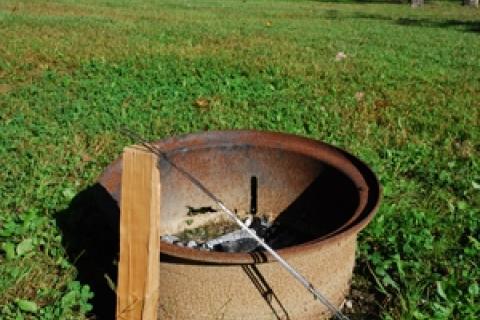
For many campers, there is not a more pleasing time of year to sit around a cozy campfire than during the autumn months. Although, campfires can also become a roaring, damaging wildfire in only a few minutes if not started, maintained and watched carefully. A covering of freshly fallen leaves provide a campfire spark the fuel for big trouble. Some parks and wild areas are protected during the fall with open fire regulations. Those regulations are in place for good reason, so if you see someone breaking the law, alert the land managers. But the best safety policy for autumn campfires is using common sense yourself.
 |
| Autumn campfires must be contained in fire rings and watched over intently to avoid wildfire dangers. |
When starting a campfire or adding wood to one, be mindful of the floating embers that shoot up into the air. These small glowing and flying fire starters seem harmless as they flutter away from the campsite, but if the conditions are right, and autumn weather conditions are normally so, a flare up may occur.
Start fires with prepared starters such as wax and sawdust candles, manufactured fire starters, or small doses of natural tinder and kindling. A common fire starter used by campers overnighting at campgrounds, newspaper, should be avoided during the fall camping season. Rising and floating newspaper pieces are too tough to contain.
Speaking of containment, keep fires corralled in a fire ring and to a manageable size — small as possible — less risk for getting out of control. When placing firewood in the ring, do so by using the log cabin format, instead of the teepee method. This keeps the fire lower and more so in the ring, as where the teepee form draws the fire up and on a vertical path. Also be sure to clear any fallen leaves near the fire ring, creating a fire break from the forest surrounding your campsite.
If the weather has been holding in a dry pattern for a couple weeks prior to your camping trip, consider forgoing a campfire altogether. That is, unless a well-managed campground with most fire hazards such as heavy leaf cover and meadows with tall standing vegetation, are well out of reach of a flittering campfire spark. A wildfire wipes out years of growth of a landscape, and it takes years to replace it. So please do your part and keep campfires in their circles and on the down low, but remain on high alert.
- 3215 views

